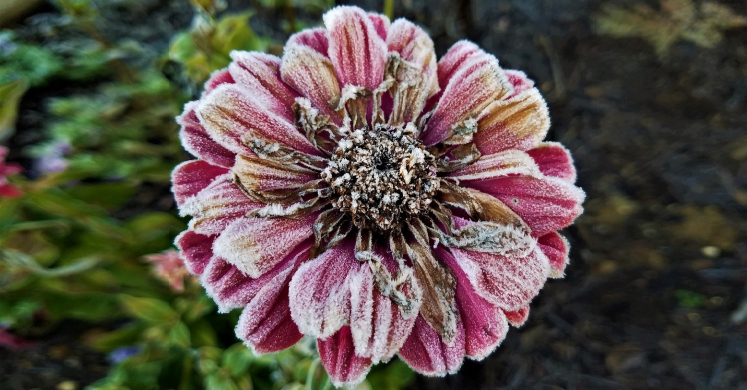Blog

#bioPGH Blog: Frosty Dreams
 A resource of Biophilia: Pittsburgh, #bioPGH is a weekly blog and social media series that aims to encourage both children and adults to reconnect with nature and enjoy what each of our distinctive seasons has to offer.
A resource of Biophilia: Pittsburgh, #bioPGH is a weekly blog and social media series that aims to encourage both children and adults to reconnect with nature and enjoy what each of our distinctive seasons has to offer.
From the intricate, feathery patterns on a window to the dusting of crystals on leaves and fences, frost is autumn’s way of teasing us with winter. It’s also a delightful excuse to enjoy that steaming cup of pumpkin spice coffee on a brisk morning! We have had a few truly frosty mornings now, but have you ever wondered how frost forms? Grab a fuzzy scarf, and let’s explore!
There are a few variations to frost formation, but broadly speaking, frost can be thought of as the cold-weather counterpart to dew. Just as there is a dew point, there is also a frost point. If we dig back through our earth science memory, we can recall that the dew point temperature is the point when the water vapor in the air has reached saturation and begins to condense, resulting in dew formation. When the dew point temperature is below freezing, it is considered the frost point. Similar to snowflake crystals, which build on particles in the atmosphere, frost crystals grow as water vapor encounters solid structures, such as grass or the last of season’s flowers.
We can also look a little closer at the conditions leading to frost and note a few differences. Radiation frost, for example, occurs when the air temperature isn’t necessarily below freezing, but clear skies and a lack of wind allow heat to “radiate” away from the ground enough to allow frost to form. This results in hoarfrost — or the classical sparkling frost that we might see covering grasses and leaves. Advection frosts, on the other hand, occur when traveling air masses of freezing temperatures move into an area. Because of the movement of air involved, advection frosts tend to look “spiky.”
In a slightly different freezing fashion, window frost occurs from the heat on in the inside of window clashing with the cold air outside the window. The water vapor from the outside condenses on the window from the indoors’ warmth, and that condensed vapor freezes to the surface of the window. This is less common with double-paned windows that are meant to prevent the escape of heat in the winter or A.C. in the summer. Car windows and older homes, though, often have beautiful works of frosty art during the colder months!
Connecting to the Outdoors Tip: If you just can’t wait for the next cold morning to see some crystalline fuzz, try this home experiment to make frost: Take two empty soup or vegetable cans without the labels and fill them both with crushed ice (you can just crunch up some full size cubes in a ziplock baggie if you only have cubes). Pour cool water into one can to fill the empty space, but for the other can, mix a cup of cool water with roughly five tablespoons of table salt before adding the mixture to the crushed ice. Then allow the cans to sit for a while. Do you notice any difference between them? If you keep a nature journal, be sure to write down what you observed!
Remember, to be considered an “experiment” as opposed to just an activity, the activity needs to be inquiry-based. If you’re making frost as a family, ask your children to make a hypothesis (best guess) about which can will form frost on the outside. Ask them why they added the salt to one of the cans. What does salt do? It lowers the freezing point of the water mixture in the can, which allows the frost to form on the outside of the salty can but not the unsalted can.
Or, if your creative side is bursting with inspiration, try to replicate the patterns you see on a frosty morning, like in this beautiful piece of Fairchild Challenge student art from the Wild About Geometry challenge:

Mackenna Matthews, 7th grade
Woodland Hills Intermediate
Continue the Conversation: Share your nature discoveries with our community by posting to Twitter and Instagram with hashtag #bioPGH, and R.S.V.P. to attend our next Biophilia: Pittsburgh meeting.
Resources
Encyclopedia Brittanica - Frost
National Weather Service: What Causes Frost?
Photos: Maria Wheeler-Dubas

